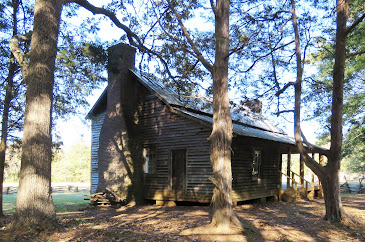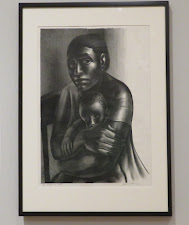Wednesday, November 29, 2023
Okefenokee Heritage Center
Monday, November 27, 2023
Vidalia Onion Museum
The museum is very small but has nicely done exhibits.
Everything is accessible.
RVs will fit in the lot if backed up over the grass or parked lengthwise across the spaces. Museum 32.20427, -82.3705
Friday, November 24, 2023
Aiken County Historical Museum
Tuesday, November 21, 2023
Historic Brattonsville
William was a militia captain in the Revolutionary War and fought against the British when they invaded a neighboring plantation.
The family became very wealthy after the invention of the cotton gin in 1793 and the plantation grew to over 5,000 acres with 139 enslaved people working the fields. William's son John inherited the plantation but died shortly afterwards and the plantation was run by his wife, Harriet, for the next 30 years.
John's and Harriet's son James Rufus served as surgeon in the Confederate Army during the Civil War. When he returned home he refused to accept the rights of the now emancipated black residents and formed a local KKK. This branch of the KKK was notoriously brutal and lynched James Rainey, a prominent black leader, former slave, and Union soldier.They terrorized local blacks and murdered a number of them. Most members of the KKK were never charged or got off with little penalty. James fled to Canada but was allowed to move back to Brattonville after a few years.The Brattonville site includes four family houses - the original 1776 log house now covered with clapboard, the Homestead House built in 1826 by John Bratton, and the Brick House built in 1855 and used for various purposes including a general store. An additional family house, Hightower Hall, is only opened for special functions. A couple of original brick slave cabins and a bunch of relocated outbuildings are also on the property along with a farm house and a cotton gin.
The visitor center has a short video about the Revolutionary War battle and exhibits on the history of the family and the plantation. A walking tour brochure of the grounds and buildings is provided. The 1776 house and the Homestead House are under renovation and are currently not open to the public. The ground floor of the Brick House features a reconstruction of the store plus exhibits about the KKK activity. A few interpreters in period costumes are on hand to explain life on the plantation. The farm has sheep, poultry, cattle and pigs.The site is not very accessible. There's one parking space near the visitor center where RVs might fit. We parked in the gravel lot which is down the hill and then a rough trek back up to the visitor center. The visitor center has a ramp and is accessible. The farm house and the slave cabins are not accessible.The rest of the site can only be accessed by going over rough, bumpy grass. The Brick House has a ramp to span the step at the entrance but a grassy slope must be navigated first.
The gravel parking lot is large enough for any RV. Brattonville 34.86504, -81.17404
Saturday, November 18, 2023
Mint Museum of Art Randolph
 Before the Charlotte Mint was built in 1835, North Carolina gold miners had to send their gold to Philadelphia to be minted into coins because there was only one US mint. The Charlotte Mint was in operation until the Civil War. After the war it was used for various purposes until it was bought from the government by private citizens to establish a public art museum. An additional location featuring arts and craft and fine arts opened in downtown Charlotte in 1999.
Before the Charlotte Mint was built in 1835, North Carolina gold miners had to send their gold to Philadelphia to be minted into coins because there was only one US mint. The Charlotte Mint was in operation until the Civil War. After the war it was used for various purposes until it was bought from the government by private citizens to establish a public art museum. An additional location featuring arts and craft and fine arts opened in downtown Charlotte in 1999. The Randolph location has a large collection of ancient art from Mesoamerica and Central America, donated by a local couple, and another large collection of British, American, Asian ceramics and decorative art. Other smaller exhibits include African art, contemporary paintings, and European art.
The museum is accessible.
The parking lot is large enough for RVs if backed into the spaces or parked lengthwise across them. A small park and short trail can also be accessed from the lot so it may be busy on the weekends. We did not go to the downtown location because parking seems limited. Museum 35.19783, -80.81378


























































